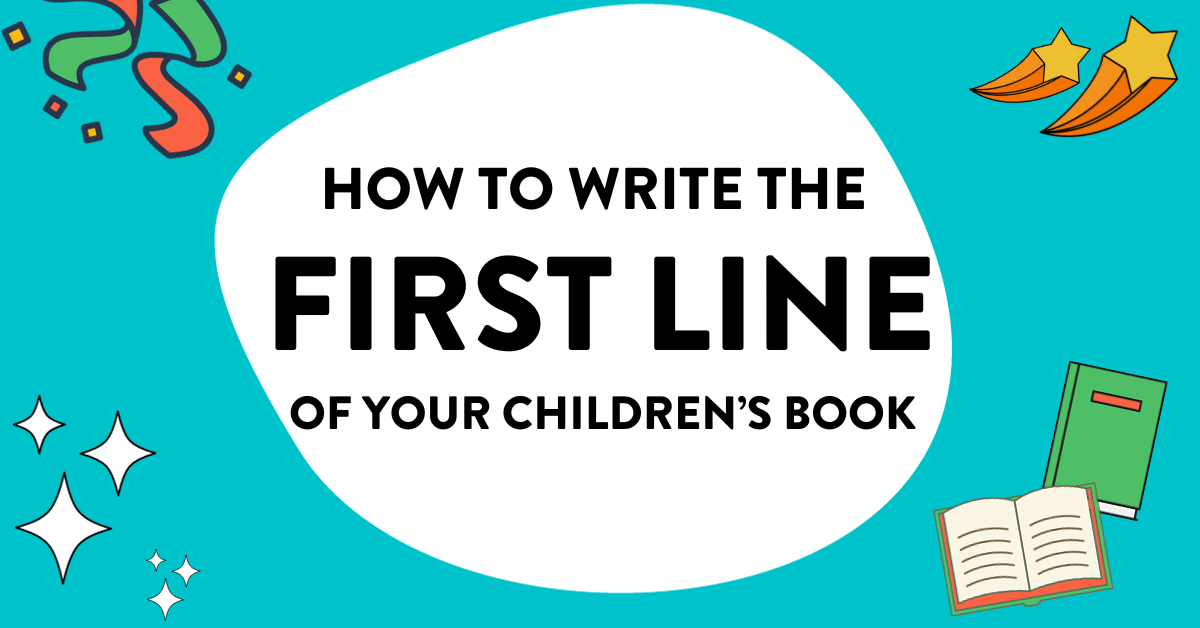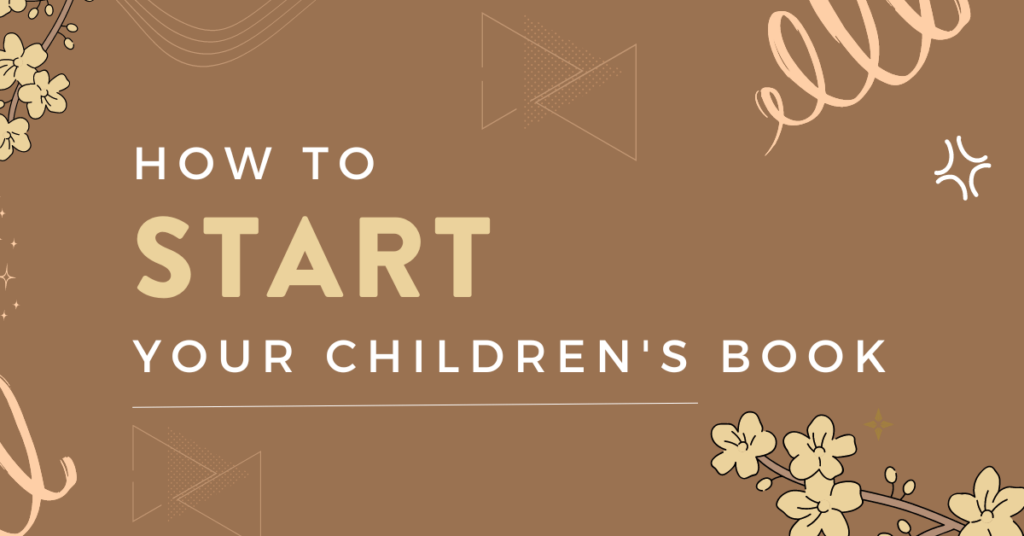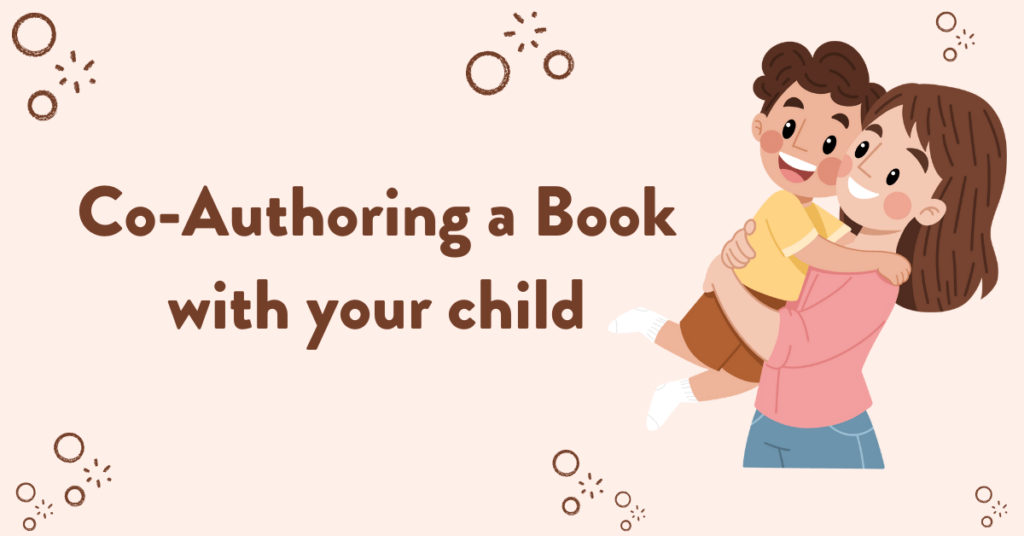
So you want to start a children’s book, and you’re faced with a blank page.
Where do you begin?
Well, the first line of your children’s picture book is the most important line. It sets the tone for the rest of the book, and grabs the reader’s attention.
Mess it up, and the reader, either a child or an adult, will dump your book faster than a kid getting rid of broccoli. Nail it, and you’ve got them hooked.
Now, if you haven’t read my post, “8 Steps to Starting Your Children’s Book“, that’s the post you should read before this one. That lays all the foundation for what to do before you begin, and then this is the post to guide you through writing that first line.
So, how do you ensure your book has an irresistible start? Let’s take a look and see.
1. What You’re Doing Wrong
Before we get into the fixes, let’s take a moment to recognize the common traps.
- Boring the Reader: Kids aren’t going to wait for your story to get interesting.
- Too Complicated: A complex prologue may work in adult fiction, not so much here.
- Lack of Action: You’ve got to start somewhere exciting, folks.
- Starting with Description: Let illustrations do the describing.
So, if you’re stumbling in any of these areas, keep reading. And if you’re utterly lost, you might want to check out How to Write a Children’s Book to start at square one.
2. The Hook: Make it Snappy
The most memorable first lines aren’t just pretty words strung together. They serve specific purposes. Here are some strategies to consider:
- Inject Conflict: Kids love drama as much as adults do. A conflict or question can draw them into your story world instantly.
- Be Quirky: A little oddity can go a long way in sparking curiosity. Get your reader to say, “Wait, what?”
- Target the Senses: Make it sensory. You’ve got sight, sound, smell, touch, and taste to play with. Use them.
Here’s how you would do each one of those three things:
- Inject Conflict: “The day Gracie decided she hated vegetables, the carrots started plotting.”
- Picture it: An underground carrot revolution, complete with spy radishes and a broccoli kingpin.
- Be Quirky: “Nobody knew why Mr. Muffins wore a tutu, but it made Tuesday mornings interesting.”
- Is Mr. Muffins a dog, a cat, or maybe even a walrus? And why Tuesdays? Imagine the possibilities.
- Target the Senses: “The air smelled of freshly baked cookies and impending doom.”
- Cookies and doom? That’s a mix of comfort and tension too irresistible to ignore.
Also, if you want to learn more about how to write your entire children’s book, check out my article on “12 Steps to Writing Your Children’s Picture Book“.
3. Good Examples of First Lines
How should you write the first line of your children’s book?
The first sentence matters more than you think. If you start off in the wrong way, you’re not going to keep the child’s attention. You’ve got maybe five seconds to make a good impression, so make it count!
Let’s look at some examples in famous children’s books and see what they do for their first line.
- “The night Max wore his wolf suit…” You might have recognized this one. It’s from “Where the Wild Things Are” by Maurice Sendak. It’s a great way to start a story fast. Boom! A kid in a wolf suit? You’ve got my attention.
- “I know I’m not an ordinary kid.” This is from “We’re All Wonders” by R.J. Palacio. Now, tell me, what kid doesn’t feel that way at some point? It taps into this universal sentiment but also promises an extraordinary tale.
- “A mouse took a stroll through the deep, dark wood.” In”The Gruffalo” by Julia Donaldson, there’s immediate action, a character intro, and the allure of the ‘deep, dark wood’. Kids are already wondering, “What’s going to happen to the mouse?”
Kids are pretty much like adults; they decide if they’re interested within the first few seconds.
So make your first sentence a baited hook.
4. Five Types of First Lines
Alright, you aspiring children’s book authors, buckle up! We’re diving deep into the world of first lines today. What, you thought all first lines were made equal? Think again. There are different types of hooks, and knowing which one to use can make a world of difference. Here’s the lowdown.
1. Meet the Character: Introduce by Name
This is where you straight-up introduce the main character. “This is Olivia. She is good at lots of things,” from “Olivia” by Ian Falconer, is a prime example. From the get-go, kids know Olivia is going to be interesting.
- It’s direct
- It’s simple
- It builds anticipation
This style is particularly effective when your character has a quirky personality that you want to flaunt right from the start.
Be careful about using this introduction, though. It’s probably the most overused way to start a children’s book story, and it’s often better to start in a more original way.
2. Action Opener: Start with a Bang
These types of openers throw readers into a situation or an event, usually one that’s action-packed or tension-filled.
“A told B, and B told C, ‘I’ll meet you at the top of the coconut tree‘” from “Chicka Chicka Boom Boom” is a brilliant case in point.
- It immediately sets the plot into motion
- It offers a taste of the book’s rhythm or tone
- It creates instant intrigue
3. The Question Starter: Create Curiosity
These are openers that pose a question either directly or indirectly. The classic “Brown Bear, Brown Bear, What Do You See?” literally asks a question as its opening line, instantly engaging the reader.
- It elicits thought
- It invites participation
- It introduces a problem or a mystery
Remember, though, your question has to be one that your story intends to answer, so make it relevant.
4. Scene Setting: Lay Down the Landscape
Sometimes the opening line paints a vivid picture of the story’s setting, like “In the great green room…” from “Goodnight Moon” by Margaret Wise Brown.
- It gives the reader a visual anchor
- It sets the mood
- It often hints at the theme
5. The Emotional Teaser: Tug Those Heartstrings
The first line from “Alexander and the Terrible, Horrible, No Good, Very Bad Day” by Judith Viorst sets the emotional tone for the entire book:
“I went to sleep with gum in my mouth and now there’s gum in my hair and when I got out of bed this morning I tripped on the skateboard and by mistake I dropped my sweater in the sink while the water was running and I could tell it was going to be a terrible, horrible, no good, very bad day.”
- It establishes the emotional state of the protagonist
- It often hints at the story’s core conflict
- It invites empathy or other strong feelings
Remember, the purpose of fiction is to make your readers FEEL things. And the terribly horrible day book starts with that dour tone right from the start.
5. Good Strategies
1. Build the Character
Who’s the star of this show? Get to them fast, and make them memorable. Consider Mo Willems’ “Don’t Let the Pigeon Drive the Bus!” The pigeon is there, pleading his case from the get-go, and kids instantly recognize his zany personality.
- First Line: A grand entrance is a must.
- Physical Traits: Briefly describe what they look like.
- Personality Quirk: Give them a characteristic that makes them special.
Kids are going to relate to characters that are somewhat like them but also have a dash of the extraordinary.
2. Create Clear Stakes
Oh, the drama! Even in a children’s book, the stakes must be clear. In “The Cat in the Hat,” the stakes are simple yet urgent. Will they get the house clean before Mom gets home?
If the reader doesn’t know what’s at risk, they won’t care. Make it simple, make it fast, and for heaven’s sake, make it clear.
The reader should know, maybe by the first page, what will happen if the characters don’t succeed. There should be a consequence if they fail to solve the problem.
3. Show Conflict
Conflict powers every story.
Try to think of a book, any book, where there isn’t conflict. You can’t! It’s the essence of what makes a narrative.
So when you’re writing a children’s book, it’s a great idea to show conflict from the very first line. Don’t delay — make the reader worried right away about the tension in your book.
6. Common Mistakes
Starting with a Cliche
As an editor of more than 1000 children’s books, the most common mistake I see is starting a story with this cliche:
“Once upon a time…”
This is a mistake because most of the time, the story they’re writing isn’t a fairy tale, so they’re signaling the wrong genre to the reader. (if you are writing a fairy tale, read my post on how to do that well!)
But second of all, it’s a phrase that we’ve heard thousands of times before, so you’re not drawing the reader into your unique story, you’re just repeating the way that thousands of other stories have started. Usually, you can do better than this.
Overthinking It: The Paralysis of Perfection
You want that first line to be epic, monumental, the stuff of legends. I get it. But sometimes, in our quest for perfection, we end up with a line that’s convoluted, stuffed to the brim with metaphors and complexity.
Bad Example: “In a universe swirling with cosmic dust and imbued with existential questions, Timmy the Turtle pondered the ineffable nature of his shell.”
- Symptom: Reads like it was written for a college philosophy class.
- Cure: Simplify. How about, “Timmy the Turtle wondered why his shell was so hard.”
The Info Dump: TMI in Record Time
Yes, your world-building is phenomenal, and yes, every detail is a sparkling gem. But throwing it all at the reader in the first line? That’s going to confuse them.
Bad Example: “In the kingdom of Glitterwood, where the trees are made of licorice and the rivers flow with lemonade, Princess Penelope sat on her emerald-encrusted throne.”
- Symptom: More detail than a travel brochure.
- Cure: Keep the focus narrow. “Princess Penelope sat on her throne, missing her old life in Glitterwood.”
Ignoring the Role of Illustrations: Let the Art Speak
Here’s where a lot of writers trip up: they forget that picture books are a marriage of words and art. Your words don’t need to do all the talking; the illustrations have a big role to play.
If you’re describing everything down to the color of the sky and the type of tree, you’re robbing the illustrator of their job. And honestly, you’re wasting precious word count.
Bad Example: “Sarah the Squirrel scampered up the tall, brown oak tree whose branches reached up like arms towards the azure sky.”
- Symptom: Overwriting what the illustration will already show.
- Cure: Let the art do its job. A simple “Sarah the Squirrel scampered up the oak tree” will suffice when paired with the right illustration.
The Non-Starter: Where’s the Beef?
The opposite of the Info Dump, this line is so bland it could be the first line of any book in the universe. You’ve got to have conflict, writers!
Bad Example: “It was a day like any other.”
- Symptom: Vague and interchangeable with any story ever.
- Cure: Make it relevant to your story’s unique angle. “It was the day Timmy found the magic pebble.”
A good technique is to start your sentence with the phrase: “And then one day…” and write what starts your storyline.
Being Too Abstract: The Riddler Strikes
Metaphors and wise sayings are great, but if they’re so abstract that you have to be a cryptographer to figure them out, you’ve gone too far.
Bad Example: “Life is but a fleeting whisper in the grand tapestry of time, thought Billy the Bee.”
- Symptom: Mystifying and dense. Is Billy a bee or a Buddhist monk?
- Cure: Start with a specific problem. “Billy the Bee buzzed around, wondering why there wasn’t much honey in the hive.”
The Slow Crawl: Hurry Up Already!
Children’s picture books are not the place for a slow, drawn-out introduction.
Kids want to jump into the action or get to know the character ASAP. (they’re not amazing at patience — but sometimes we adults aren’t too good either).
Bad Example: “On a sunny and slightly breezy afternoon, where the clouds were a picturesque formation of cumulus fluff and the temperature was neither too hot nor too cold…”
- Symptom: Enough with the weather report!
- Cure: Get to the point. “On a sunny afternoon, Maria found a strange key.”
Test Your First Line
You’ve written that first line. Fantastic!
Now, how do you know it’s any good? Simple: Test it on kids, revise it, and get professional advice if needed. If you’re in doubt, get feedback on your book from folks who know the ins and outs of children’s literature.
Take it to the Next Level
So, you’ve got your first line down. What’s next? Well, if you’re looking to go from amateur to pro, consider investing in a course like “Two Weeks to Your Best Children’s Book”, which can guide you through the rest of the storytelling process.
In a Nutshell
The first line of your children’s book is your handshake with the reader. It’s your one shot at a first impression. Make it count. Different types of openings serve different types of stories. Knowing which one best fits your tale can be the first step in making your story not just readable but unforgettable.
And when you’ve finished writing your entire book, come visit us at Bookfox Press and we can help you with all the nitty-gritty of publishing (from formatting to illustrations to ISBNs).




One thought on “How to Write the First Line of Your Children’s Book (6 Steps)”
Thank you for the helpful tips on writing the first line of a children’s book. It is critical for engaging young readers and setting the tone. Great advice for anyone involved in children’s book writing!